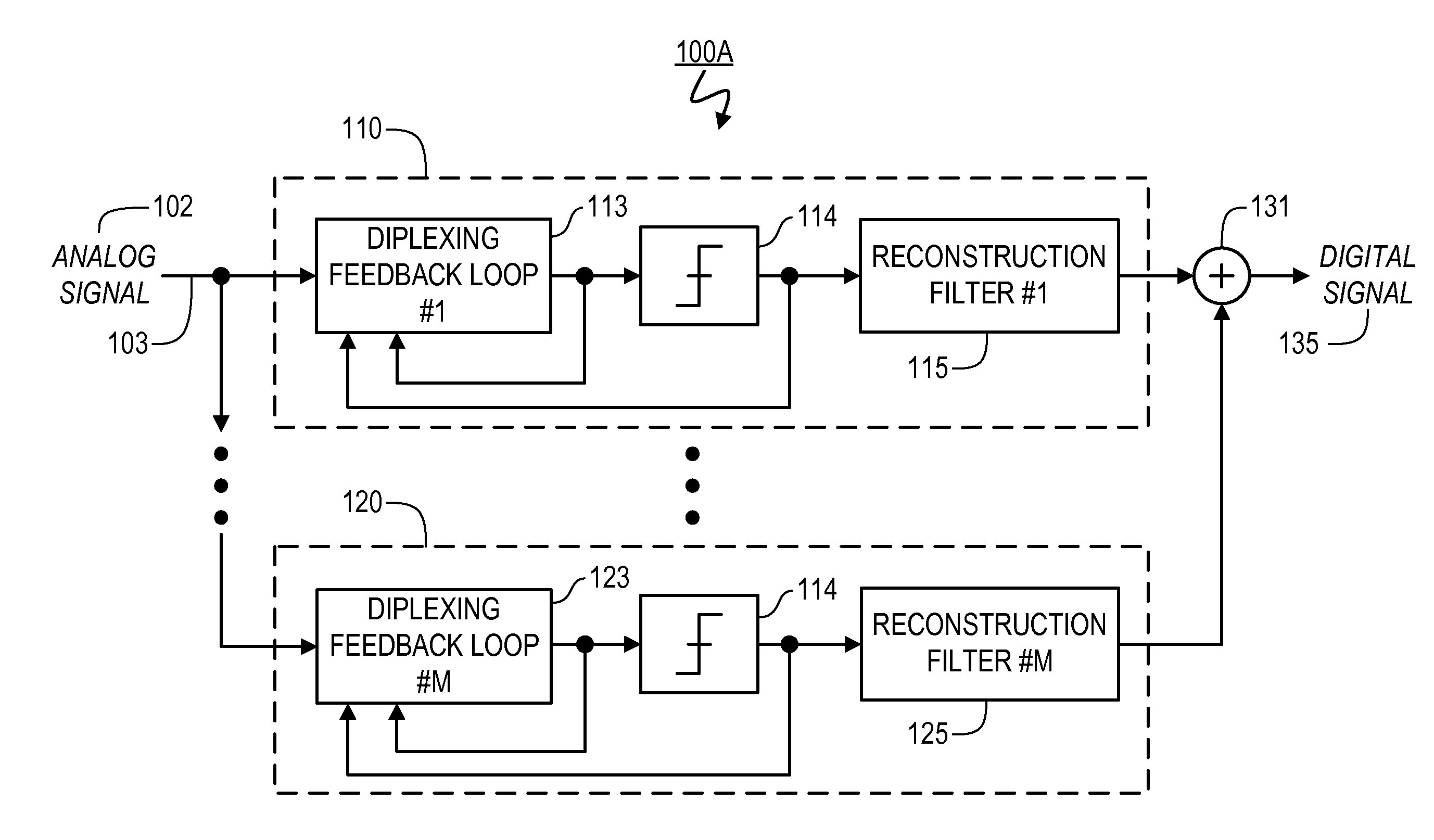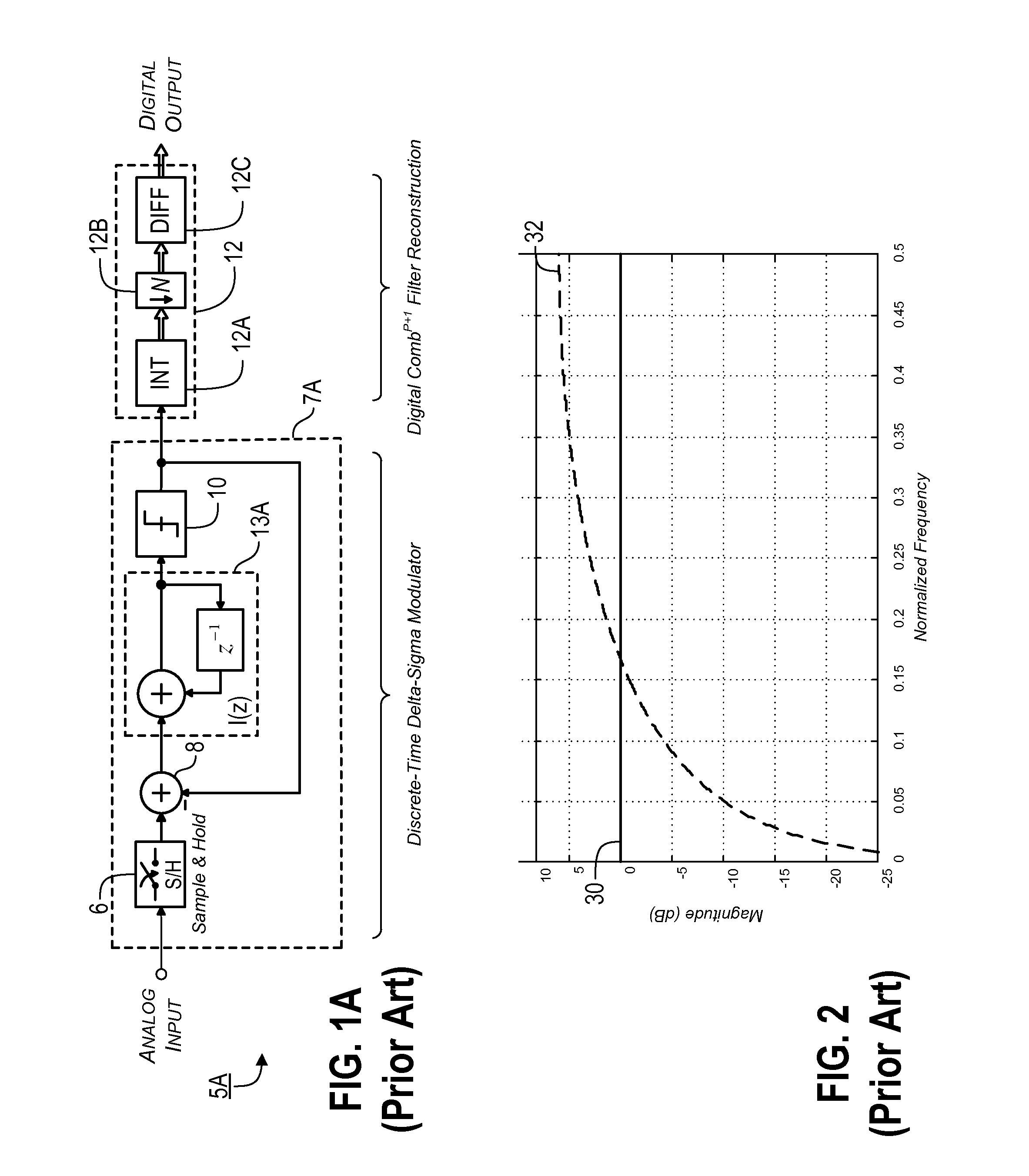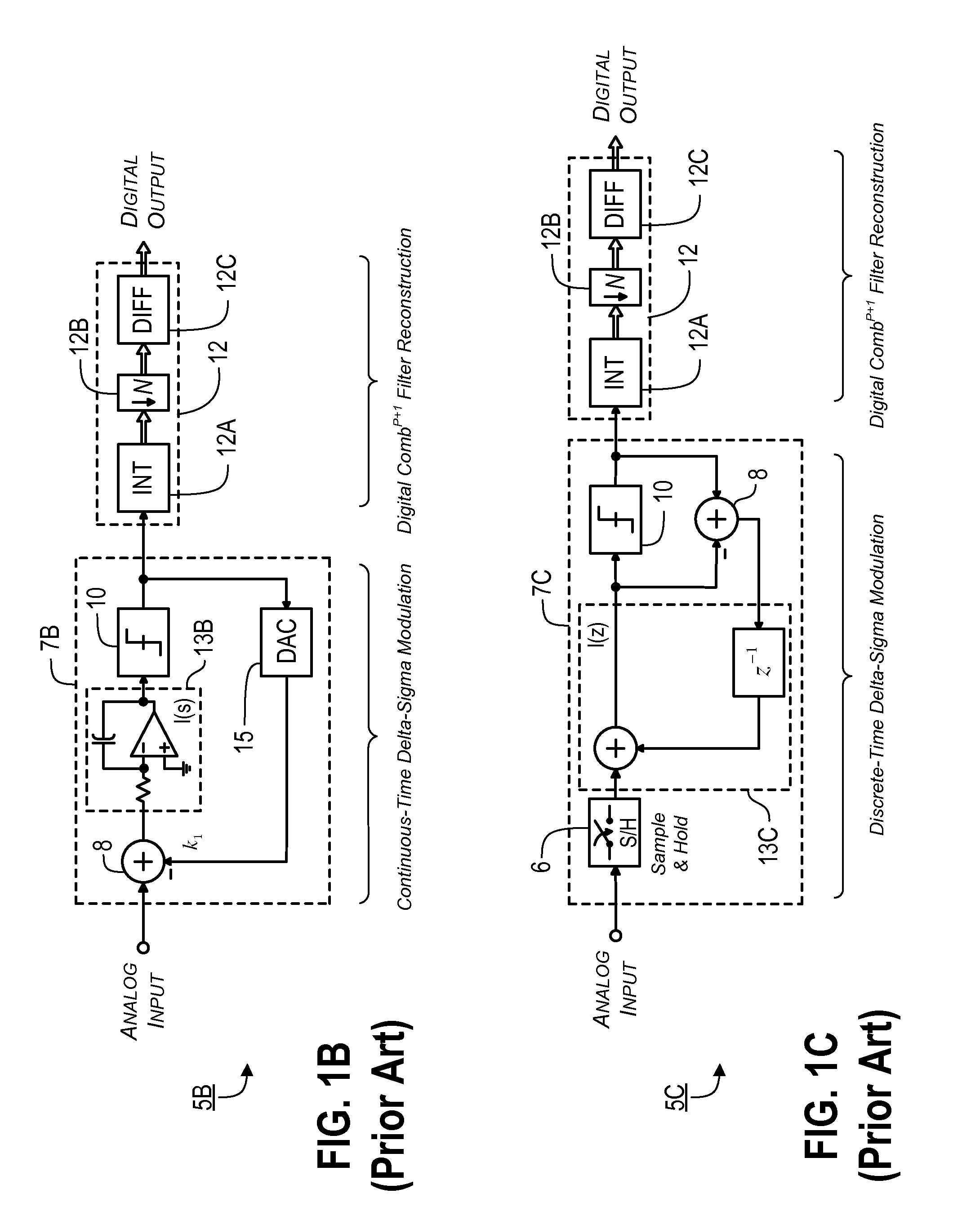Sampling/Quantization Converters
a technology of sampling/quantization converters and converters, applied in the direction of analogue conversion, code conversion, electrical apparatus, etc., can solve the problems of limited resolution of flash converters, limited current solutions, and degraded signal quality, etc., to achieve wide bandwidth, high resolution, and better combination
- Summary
- Abstract
- Description
- Claims
- Application Information
AI Technical Summary
Benefits of technology
Problems solved by technology
Method used
Image
Examples
Embodiment Construction
)
[0048]The present disclosure is related to the disclosure set forth in the application by the present inventor, titled “Multimode Sampling / Quantization Converters”, which is being filed on the same day as the present application. The foregoing application is incorporated by reference herein as though set forth herein in full.
[0049]A preferred converter according to the present invention uses a technique that sometimes is referred to herein as Multi-Channel Bandpass Oversampling (MBO). Such a technique shares some structural similarities with conventional parallel delta-sigma (ΠΔΣ) and multiband delta-sigma (MBΔΣ) analog-to-digital converters, in that the MBO converter also consists of multiple, parallel, oversampling converters. However, a MBO converter according to the preferred embodiments of the present invention incorporates one or more of the following technological innovations to improve instantaneous bandwidth and resolution: 1) continuous-time, Diplexing Feedback Loops (DFL...
PUM
 Login to View More
Login to View More Abstract
Description
Claims
Application Information
 Login to View More
Login to View More - R&D
- Intellectual Property
- Life Sciences
- Materials
- Tech Scout
- Unparalleled Data Quality
- Higher Quality Content
- 60% Fewer Hallucinations
Browse by: Latest US Patents, China's latest patents, Technical Efficacy Thesaurus, Application Domain, Technology Topic, Popular Technical Reports.
© 2025 PatSnap. All rights reserved.Legal|Privacy policy|Modern Slavery Act Transparency Statement|Sitemap|About US| Contact US: help@patsnap.com



